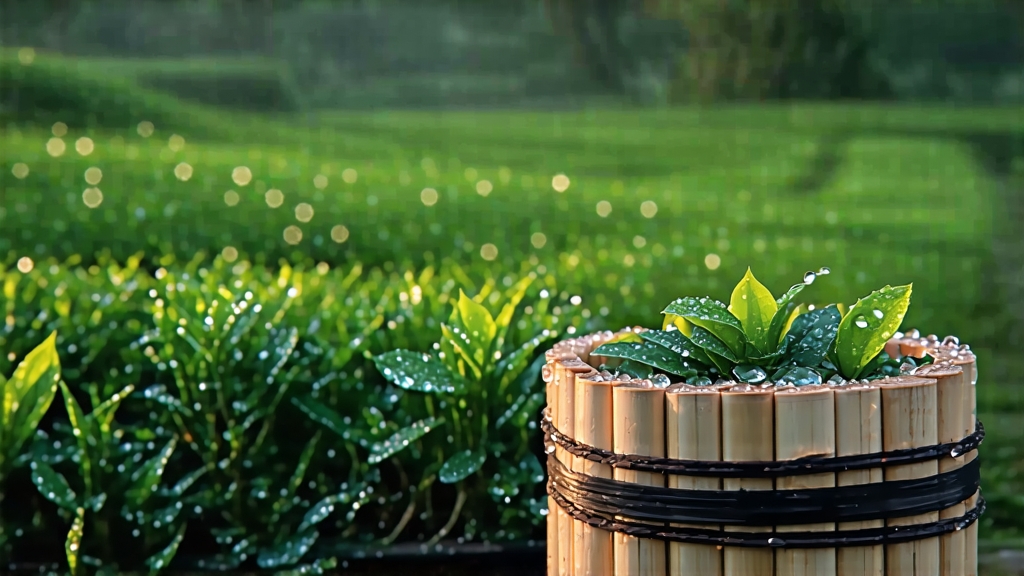
When the last winter star fades above the Wuyi foothills, the tea gardens of Fuding awaken under a veil of cold mountain mist. It is here, in the fleeting window between early March and mid-April, that the most coveted of all white teas—Bai Hao Yin Zhen, literally “White Hair Silver Needle”—is born. To international drinkers accustomed to the smoky drama of Lapsang Souchong or the rolling sweetness of Tie Guan Yin, Silver Needle can seem almost too quiet: pale liquor, whispered fragrance, a finish that disappears like a deer into fog. Yet beneath that restraint lies a story of dynastic tribute, microscopic leaf hairs, and a craft so minimal it borders on meditation.
-
A leaf that once paid imperial rent
Historical gazetteers first mention “white down tea” during the Song dynasty (960-1279), but it was the Qing court that elevated Yin Zhen to tribute status. Every spring, prefectural officials sealed the freshly picked buds in silk pouches cushioned with rice paper, then raced by relay horse to Beijing’s Forbidden City before the Dragon Boat Festival. Legend claims the Empress Dowager Cixi rinsed her face with the first infusion to preserve porcelain skin, a rumor that sent court ladies bargaining for leftover buds at astronomical prices. Export came late: in 1891 a Fuding merchant named Wu Dezhang steamed, packed and shipped three chests to Hong Kong, where British brokers christened the tea “Silver Tips” and sold it alongside Darjeeling in Calcutta auctions. By 1915 Yin Zhen won gold at the Panama-Pacific Exposition in San Francisco, sealing its global mystique. -
Geography written in bud geometry
Authentic Bai Hao Yin Zhen comes only from two micro-zones: the coastal terraces of Fuding and the higher valleys of Zhenghe, both in northern Fujian. The region’s signature red-yellow lateritic soil is rich in iron and aluminum ions that slow bud elongation, concentrating amino acids. Diurnal swings of 10 °C between night sea fog and morning sun stress the tea bush (cultivar Fuding Da Bai or Zhenghe Da Bai), forcing it to secrete a protective down—tiny trichomes that shimmer silver under moonlight and contain the terpene linalool responsible for the tea’s signature orchid note. Above 500 m elevation, buds grow more slowly, yielding needles that are plumper, more resinous and capable of decades-long aging. -
The art of doing almost nothing
White tea’s craft is defined by subtraction. After dawn plucking—only standard-issued bamboo baskets, no plastic—buds are spread on reed mats in a drafty pavilion called a “withering loft.” For 36 to 48 hours they lose moisture while enzymes oxidize at glacial speed. The master’s sole tools are his fingertips and the weather report: on humid days he shifts mats closer to louvered windows; when the barometer drops he heaps buds deeper to slow desiccation. No pan-firing, no rolling, no baking above 40 °C. Once water content falls to 8–9 %, a final charcoal “foot-fire” using fruit-wood embers fixes the aroma. The entire process is a high-wire act: under-withered needles smell grassy; over-withered ones lose their down and age into flat cardboard. In 2022 a single 500 g lot of pre-Qingming Yin Zhen sold at auction for USD 14,300, largely because the withering coincided with three perfect days of 65 % humidity and 22 °C breeze. -
How to brew moonlight in a glass
Silver Needle is forgiving yet paradoxical: it tolerates clumsy temperatures but rewards microscopic attention. Start with a tall clear glass—300 ml, 7 cm diameter—to watch needles stand upright like miniature stalactites. Use 3 g of tea, 85 °C water poured along the wall to avoid scorching down. The first 30-second infusion releases a pale jonquil liquor tasting of fresh soy milk, honeydew and a trace of marine ozone. Subsequent steeps—40 s, 50 s, then incremental jumps—unfold layers of starfruit, white peach and, in aged lots, a camphor coolness reminiscent of old sheng pu-erh. Cold brew is revelatory: 5 g per liter of spring water, eight hours in a wine fridge at 4 °C, yields a liquor like chilled sake with a faint cinnamon tail